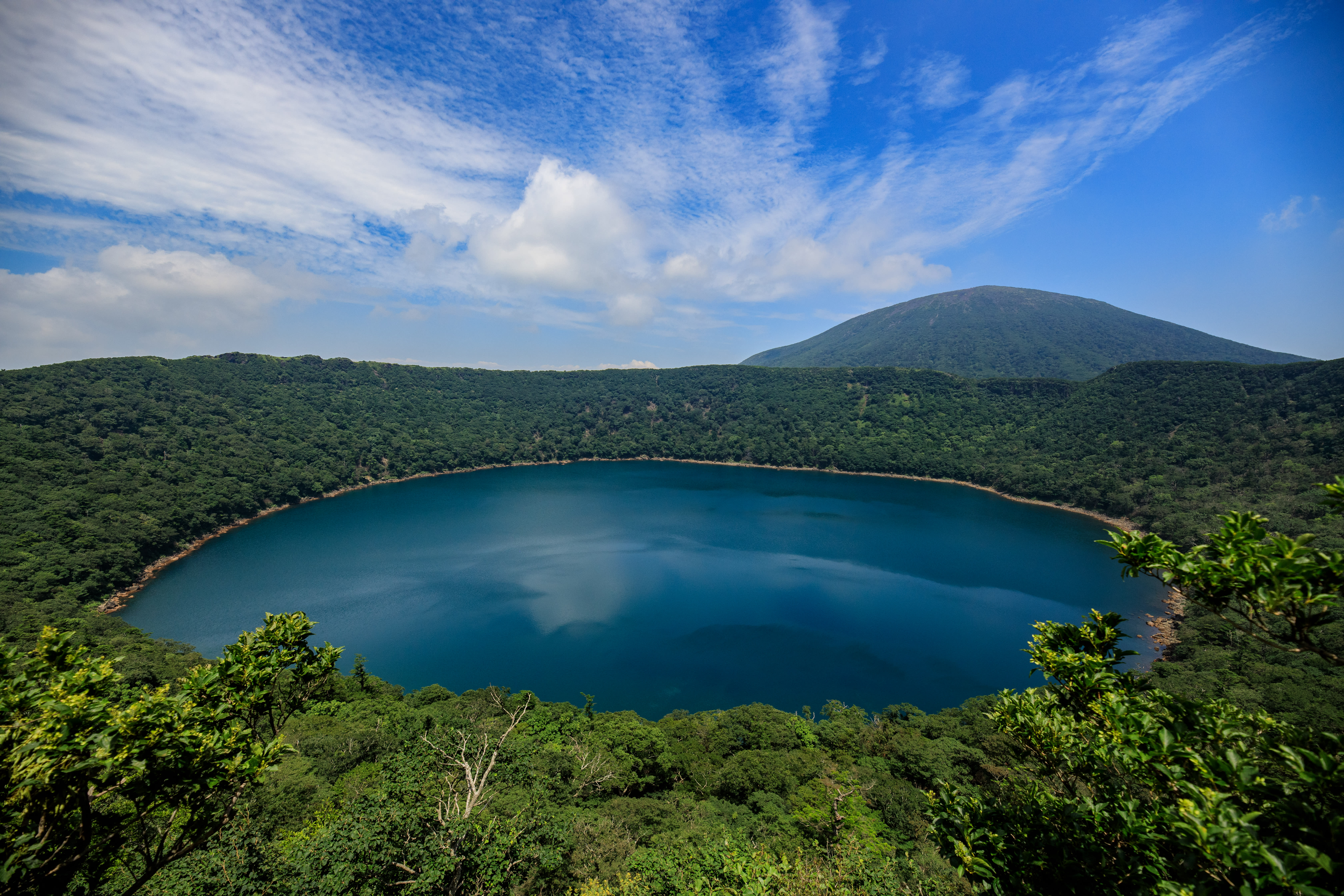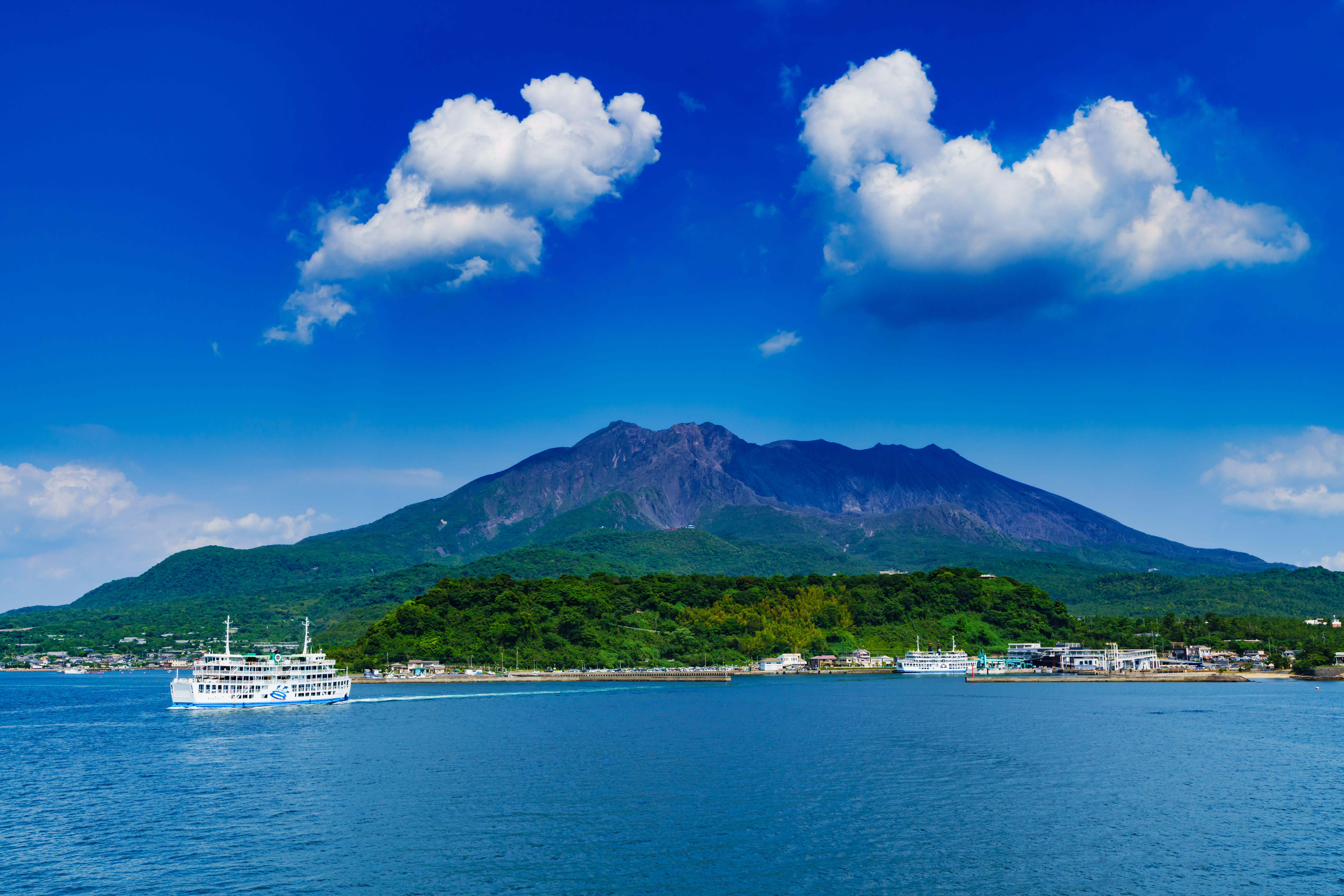Don't Miss
- Views of Mount Shinmoe, an active volcano, from the peak of Mount Karakuni
- Taking a hot sand bath in the Ibusuki Onsen district
- Birdwatching around the Miike Crater Lake
- Views of Mount Sakurajima from Takatoge Pass
Kirishima-Kinkowan National Park in southern Kyushu is full of volcanic wonders, sandy beaches, and sites imbued with folklore and myth. Birdwatch on the shores of a crater lake, visit ancient shrines and take a hot sand bath by the sea not far from sleeping but still smoldering volcanoes.
Volcanic activity has shaped the wild scenery of Kirishima-Kinkowan National Park, which straddles Kagoshima Prefecture and Miyazaki Prefecture in Kyushu. A series of volcanoes and crater lakes span the park’s northern range. The active volcano Mount Sakurajima, Kinkowan Bay and the sandy peninsulas that enclose the bay make up the southern expanse. Each area has distinctive scenery and a diverse range of plants and animals.
The Kirishima area makes up the northern end of the park. It has more than 20 volcanoes, both large and small, as well as a number of crater lakes, hot springs and lava plateaus. Mount Karakuni (1,700 m) is the park’s highest peak, and the views from its summit are spectacular. On clear days you can see Kinkowan Bay, Mount Sakurajima and Mount Shinmoe.
Onamiike Crater Lake sits at the base of Mount Karakuri. You can circle Onamiike in less than 90 minutes, and the walk is particularly lovely during the fall when you can enjoy the changing colors of the foliage. According to local folklore, the lake gets its name from a girl named Onami, who was the human incarnation of a dragon that lived in its depths.
At Miike, another crater lake in the Kirishima area, you can camp by the lake and spend the day kayaking and fishing. The lake attracts wild birds like the ruddy kingfisher and Mandarin duck, making it popular among birdwatchers.
Mount Takachiho-no-Mine, in the southern part of Kirishima, is a revered site in Japanese mythology. It is believed to be where the Ninigi no Mikoto—grandson of the sun deity Amaterasu—descended to Earth from heaven and established Japan’s imperial bloodline. Ninigi is enshrined in crimson-red Kirishima-jingu Shrine, at the foot of the mountain. The original shrine was built in 540, but over the centuries, volcanic eruptions and fires destroyed it several times. You can visit the original shrine’s ruins at Furumiya Ato, where ceremonies such as taiko drum, kagura dance and fire festivals are still held. The current shrine was rebuilt in a different location in 1715 and is surrounded by ancient cedar trees up to eight centuries old.
Kirishima has plenty of attractions for hikers in each of the four seasons. Some of the highlights are the ponds in Ebino Highland, Mount Karakuni, Lake Onamiike and Mount Takachiho-no-Mine.

The Kinkowan Bay district makes up the southern part of the park. A huge volcanic explosion 29,000 years ago formed this bay. Mount Sakurajima, an active volcano that serves as the symbol of Kinkowan Bay, can often be seen spewing smoke. Sakurajima’s regular eruptions and ash showers continue to shape the area’s topography. A great place to get an unobstructed view is the top of Takatoge Pass, a spot also known for azaleas in spring.
The soil at the foot of Mount Sakurajima is so fertile that it produces some of the biggest radishes in the world. Visit a local farm to harvest some and then feast on the “fruits” of your labor.
Stretches of pine trees line the white sand Shigetomi Beach in Kinkowan Bay. You can see views of stunning Mount Sakurajima from the shore. The beach is very lively in summer.
Further south, the Ibusuki Onsen district rests on the tip of Satsuma Peninsula. This is the place to experience a hot-but-exhilarating sand bath by the sea. Nearby Chiringashima Island is another popular spot. A sandbar leading to the island makes it possible to walk there when tides are low rather than taking a boat.
On the opposite side of the bay are the rocky cliffs of Cape Sata. The cape is the southernmost point of mainland Japan, and home to a variety of subtropical plants, like Chinese fountain palms (Livistona chinensis) and fern palms. The Cape Sata Observatory offers lofty, panoramic views of Kinkowan Bay and the islands beyond.

Volcanoes and hot springs go hand in hand, and the sulfur and hydrogen carbonate hot springs in the Kirishima-Kinkowan National Park area provide numerous bathing opportunities. Since ancient times, they’ve attracted locals and visitors looking to relax and rejuvenate. Ibusuki Onsen draws visitors from all over Japan for its unique open-air hot sand baths heated by volcanic steam.